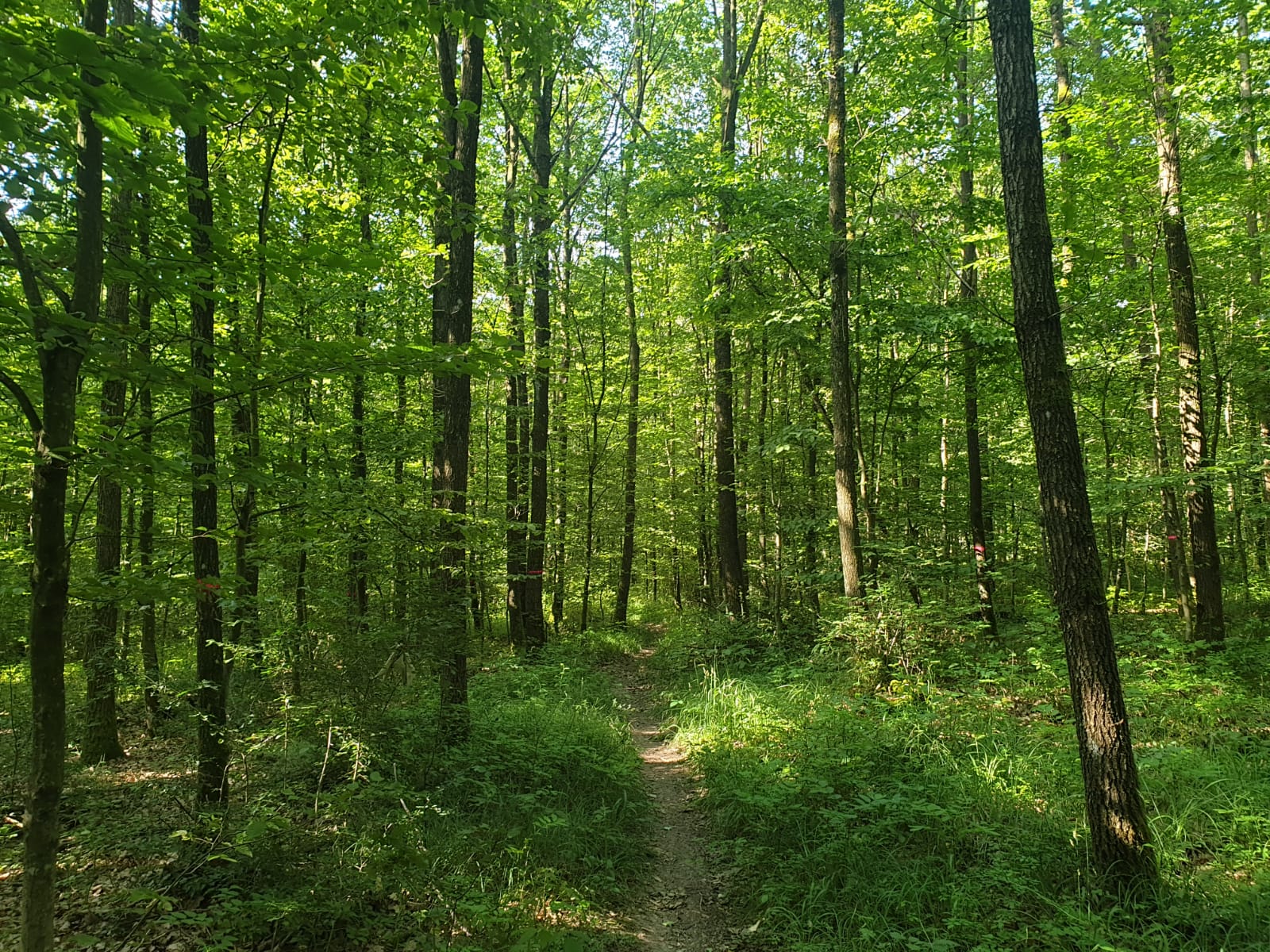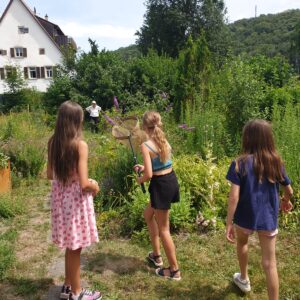 Coline Raillon is nearing the end of an epic walk traversing three European countries (Germany, Switzerland, and France) and some 1,300 km (about 807 mi) as an ambassador raising funds for A Rocha’s 40th Anniversary Campaign. Coline set out with no cash or credit card, 100% reliant on the ask for hospitality in the form of food and accommodation, aiming to donate the money saved to A Rocha. Along the way she has met over a dozen pastors and shared A Rocha’s message of caring for creation (often hosting butterfly walks!) with newfound friends at churches, schools, camps and kitchen tables. Coline started her journey in Heidelberg, Germany at the end of July and has traveled by foot following parts of the Huguenot Way – a hiking trail highlighting the historical exile of the Huguenots (a religious group of French Protestants from the 17th century), along with adventurous detours both planned and unplanned.
Coline Raillon is nearing the end of an epic walk traversing three European countries (Germany, Switzerland, and France) and some 1,300 km (about 807 mi) as an ambassador raising funds for A Rocha’s 40th Anniversary Campaign. Coline set out with no cash or credit card, 100% reliant on the ask for hospitality in the form of food and accommodation, aiming to donate the money saved to A Rocha. Along the way she has met over a dozen pastors and shared A Rocha’s message of caring for creation (often hosting butterfly walks!) with newfound friends at churches, schools, camps and kitchen tables. Coline started her journey in Heidelberg, Germany at the end of July and has traveled by foot following parts of the Huguenot Way – a hiking trail highlighting the historical exile of the Huguenots (a religious group of French Protestants from the 17th century), along with adventurous detours both planned and unplanned.
Coline has had to reconcile her hopes and expectations for the journey with challenges and realities, from blisters and exhaustion to difficulties connecting with people amidst their busy everyday lives. ‘It’s made me think about the number of opportunities I missed while I was myself very occupied,’ Coline realized.
 On the first leg of the walk, Coline took a two week break to help at a Scout camp. Relating to the kids gave time for reflection: ‘As I journey in my understanding of the world and of who God is, I have the intuition that it is essential to create connections and that we need to recreate a culture of hospitality and community. It’s why I support A Rocha, because community is at the heart of the organization.’
On the first leg of the walk, Coline took a two week break to help at a Scout camp. Relating to the kids gave time for reflection: ‘As I journey in my understanding of the world and of who God is, I have the intuition that it is essential to create connections and that we need to recreate a culture of hospitality and community. It’s why I support A Rocha, because community is at the heart of the organization.’
Coline describes her walk as ‘a journey of trust’, with lessons and learnings each day. She has been amazed by the hospitality people have shown her – like asking for a toilet at a school leading to an invitation to introduce kids to butterflies in a garden and an offer of two nights’ accommodation. ‘Since the beginning, I have always found someone to open their home to me. Not just as a shelter, but a real invitation, sharing dinner, spending time in discussion and having breakfast together,’ Coline recalls. So far, Coline has slept in 42 different places, 80% of which were people she didn’t know before the walk.
 As Coline approaches the final leg of her walk for A Rocha, she is tired but encouraged. She continues to meet churches and communities, and says, ‘It feels like the Spirit is blowing the same way in different places, putting community and hospitality in the heart of lots of people, preparing the Church for the difficult times we are going towards.’ Coline is expecting to reach Saint-Jean-du-Gard, the starting point of the Huguenot Way, at the end of September to conclude her journey.
As Coline approaches the final leg of her walk for A Rocha, she is tired but encouraged. She continues to meet churches and communities, and says, ‘It feels like the Spirit is blowing the same way in different places, putting community and hospitality in the heart of lots of people, preparing the Church for the difficult times we are going towards.’ Coline is expecting to reach Saint-Jean-du-Gard, the starting point of the Huguenot Way, at the end of September to conclude her journey.
You can read more about Coline’s reflections and follow her #WalkforARocha on social media. To support Coline’s fundraising efforts, you can donate here. Please click ‘dedicate this donation’ and type in ‘Coline‘ to direct your gift. Thank you for your prayers and support for Coline! Learn more about starting your own fundraising effort for A Rocha here, or get in touch to explore how we can help with your creative idea.